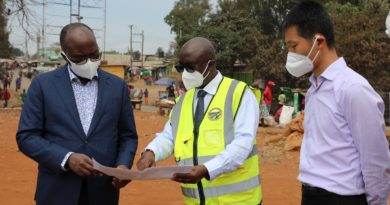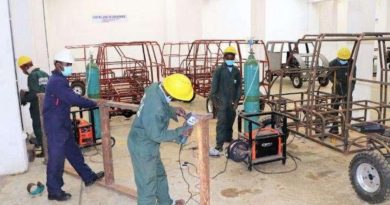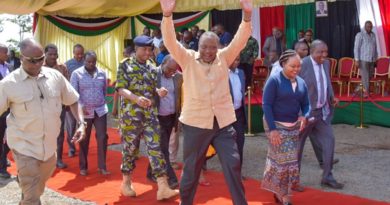The Strategic Benefits to Siaya County in the Re-Launching of Kisumu Port
From siaya.go.ke, by His Excellency Cornel Rasanga Amoth, EGH, Governor, County Government of Siaya
Introduction
The Government of Kenya has prioritized the sustainability of its ocean and blue economy as an enabler of the Vision 2030 Economic Blue Print. The Blue Economy covers lakes, rivers and other water bodies that are critical to the survival of humanity. The Kenya Government’s effort and interest in the promotion and protection of blue economy is clearly reflected by it hosting the Sustainable Blue Conference held in Nairobi in 2018. The conference was held to create awareness on the importance of the Blue Economy and how to harness the potential of the oceans, seas, lakes, and rivers to improve lives of all, particularly in developing states, women, youth and indigenous people. It also dwelt on how to leverage the latest innovations, scientific advances and best practices to build propensity while conserving our waters for the future generation. Besides the National Government’s effort to reposition blue economy as key economic driver, it is also recognized that the county governments had also realised the importance of the sector to regional economies.
In this regard, the Lake Region Economic Bloc which represents the socio-economic aspirations of fourteen counties within the Lake Victoria Basin that constitute 30 percent of Kenya’s population has similarly prioritized the blue economy as a key economic pillar.
In its effort to promote sustainable utilization of Kenya’s blue economy therefore, the National Government has constructed Kisumu port as a means of using marine subsector to promote local and regional trade, and indirectly boost agriculture and industrial development. Other opportunities include ware houses, and clearing and forwarding enterprises. These efforts will spur economic growth, create employment and reduce poverty.
The launch of Kisumu port marks a major step not only in re-energising the economy of Kisumu only but the entire western region. Kisumu port is now a major economic hub in the region especially for countries that rely on Kenya for imports. The port is expected to create 10,000 jobs either directly or indirectly.
Siaya county being among the fourteen counties and strategically located on the Lake Victoria basin is best suited to benefit from water related investments, and employment creation for the youth. The official opening of the revitalized Kisumu Port on 1st June, 2021 is therefore a boon to the people of Siaya and this region.
Link between the opening of the port and accrued benefits to Siaya County
Siaya County is one of the six counties in Nyanza region. Its location on the Lake Victoria region makes it best suited to benefit from water related investments such as transport, fishing, agricultural production as well as value addition in other products. Apart from Kisumu Port, three other feeder ports have been identified to be constructed, namely, Asembo Bay, Luanda Kotieno Bay and Usenge Bay. These feeder ports will be used for loading and offloading passengers and cargo from other ports such as Kisumu, Tanzania, Uganda, Rwanda, Southern Sudan, Burundi, Homabay, and so on.
Siaya County has a good climate for agricultural production and strategically located for the marketing of agricultural produce and other produce. The sector consists of crop production, including horticulture, and fisheries which has great potential for increased volumes for both local consumption and exports to other counties, and outside the country. Lake transport will definitely make this easier and cheaper, hence likely to attract investments in these sectors.
The horticulture subsector needs further emphasis because of its enormous potential. Siaya County is rich in fruit production, such as mangoes, avocados, bananas and pawpaw. Investments in fruit processing industry however remain largely unexploited.
Likewise, Cotton value chain development has remained unexploited, and yet, the County has a lot of potential for the production of cotton. Agro-processing of other crops such as groundnuts, cassava, sweet potatoes, soya beans amongst others remain unexploited.
These sub-sectors may therefore benefit greatly from potential investors who now have an incentive to come to Siaya and invest in their areas of specialization and move their products using cheap transport means through the lake to reach potential market destinations for their products.
The fish industry which employs a big proportion of the Siaya population has had many challenges, including transportation. The construction of the feeder ports in Siaya will help the local traders as well as fishermen to transport the fish to the required destination at an affordable cost.
In addition, investors may also be attracted to operate at the feeder ports where products are loaded and offloaded in these spots. Other opportunities include construction of ware houses, and clearing and forwarding enterprises.
A part from creating employment opportunities to the local communities, investments in cotton value chain development, agro-processing of other crops and fruits processing, construction of ware houses, clearing and forwarding and manual labour at the ports will also spur economic growth and hence reduce poverty in the region. Availability of cheaper means of transport to markets, especially for fishermen and other traders will cut down on middlemen thus ensuring increased profits.
Conclusion
Siaya County stands to benefit enormously from the operationalization of Kisumu port due to the many feeder ports that will be opened and hence creation of many employment opportunities at the feeder ports. The Agricultural sector offers many opportunities for investments that can attract prospective investors for value chain development taking into account the reduced transportation costs to various destinations, including Tanzania, Uganda, Rwanda, Democratic Republic of Congo, Southern Sudan and so on. Residents of Siaya should therefore embark on agribusiness to generate goods to be transported to these countries through the port.




